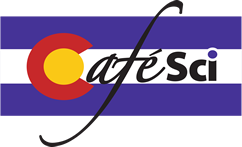This house smells so good - I wonder what I'm inhaling?
May 23, 2019
About the Topic
“This house smells so good—I wonder what I’m inhaling?” Caleb Arata, student volunteer in the Thanksgiving Dinner test house, as quoted in The New Yorker.
The air pollution of our everyday lives: What cooking and cleaning does to the air of our homes. Marina Vance will talk about a study called HOMEChem, when scientists from over a dozen universities in the US and Canada converged on a manufactured house to cook and clean for a month, and to learn about unknown chemistry that happens when those everyday activities are performed. Although outdoor air pollution has been studied and regulated for decades, indoor air pollution isn’t understood to the same level of detail, which is interesting because we spend 90% of our time indoors. Our speaker will talk to us about the complex reality of our indoor air quality, considering the influences from indoor and outdoor pollution sources.
The HOMEChem experiment sounds to us at Café Sci like it was a hoot! It was headed up by Dr. Vance, and her colleague at Colorado State University, Dr. Delphine Farmer. You can read and see more about it, and the parent research community, on its excellent web site.
Dr. Vance was also featured in a recent article by Nicola Twilley on the HOMEChem experiment in The New Yorker called Home Smog.
And there are videos about it. A short introductory video gives you a good picture of the test house and the hordes of investigators!

Bio
Dr. Marina Vance is an Assistant Professor in the Department of Mechanical Engineering at the University of Colorado Boulder, and a member of the Environmental Engineering Program. She grew up in Florianópolis, in southern Brazil, obtained BS and MS degrees in Sanitation and Environmental Engineering at the Universidade Federal de Santa Caterina there, and her PhD in Civil and Environmental Engineering at Virginia Tech, before joining the faculty in Boulder. She says that “As an environmental engineer and research scientist, I am passionate about communicating our science to a broad audience.”
